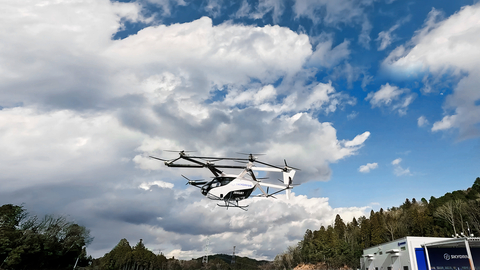|
Getting your Trinity Audio player ready...
|

Advanced Air Mobility (AAM) is an air transport system concept that integrates new, transformational aircraft designs and flight technologies into existing and modified airspace operations.
The objective of AAM is to move people and cargo between places more effectively, especially in currently underserved local, regional, urban, and rural environments. In the United States, this effort is gaining momentum though the Advanced Air Mobility Coordination and Leadership Act (H.R. 1339). Which was introduced through the U.S. Department of Transportation and the National Aeronautics and Space Administration (NASA). Significant private capital and commercial innovation have also flooded into the space as hundreds of entities are bringing unique approaches to market to solve the challenges inherent to AAM. The Federal Aviation Administration (FAA) will regulate the development and operations, and track and address safety and security issues that may arise, as these designs are brought to market.
In its effort to get ample technical and infrastructure expertise, safety and integration detail, socio-economic consideration, and global resources, NASA’s Aeronautics Research Mission Directorate (ARMD) has invited aerospace and defense companies, architects, engineers, urban planners, public aviation and transportation agencies, and universities to develop strategic collaborative partnerships. NASA’s campaign and related efforts are creating the public-supported momentum needed for widespread adoption of this advanced airborne technology.
Types of Advanced Air Mobility Vehicles in development
The AAM concept creates innovative, yet cost-effective aircraft with a low carbon footprint. NASA and other AAM proponents have promoted air vehicle designs “enabled by electrification and scaled through automation.” Thus, virtually all of the developed AAM vehicles have all-electric or hybrid-electric power systems, aside from some exploration into hydrogen-powered zero-emission aircraft. Many are highly automated to navigate from point-to-point safely without a human operator aboard. Most of the designs fall into one or more of these types:
- Electric Vertical Take-Off & Landing (eVTOL) designs focus in the areas of on-demand air taxis, airport passenger transfers, patient transfers, rooftop-to-rooftop cross-town trips, and more. Some eVTOL have onboard or remote pilots; others have “self-driving” automated navigation.
- Electric Conventional Take-Off & Landing (eCTOL) aircraft are used for short-range trips, small cargo deliveries, and passenger transfers from regional and rural airstrips.
- Small Unmanned Aircraft Systems (sUAS), also popularly known as drones or Unmanned Aerial Vehicles (UAVs), for videography, small package delivery and pick-up, transfer of medical supplies, etc.
Advanced Air Mobility or Urban Air Mobility?
Urban Air Mobility (UAM) leads the way for Advanced Air Mobility, focused on sustainable air mobility technologies for urban environments. Why? First, because all of the advances developed for UAM can also be used to solve problems in rural and regional areas, but the opposite is not always true. For example, aircraft delivering cargo or passengers over city traffic and infrastructure could also be used productively in rural or regional areas, but most electric conventional take-off and landing vehicles created for use regionally would have far fewer uses in the urban core. Equally important, however, is that use-case studies show companies and individuals in cities and suburbs will use UAM vehicles and services much more often and sooner, proving their cost-effectiveness and resulting in them becoming financially viable more quickly. As that financial strength grows, it can also help support the growth of the less urban elements of AAM operations.
Autonomous controls and detection sensors
Autonomous controls and detection sensors
In addition to advanced electric aircraft motors and power systems, the aviation and aerospace companies developing AAM / UAM solutions for unmanned aircraft need autonomous flight control systems. These can vary from level 1 or 2 autonomy, where the aircraft still requires human control but has pilot support systems up to a level 5 fully autonomous aircraft. This level of autonomy will require the developer to include electronic data sensors – from cameras and LiDAR scanners to inertial navigation systems (INS), GNSS receivers, and more — as well as signal processing to turn the information into “intelligent” decisions about navigation, compensate for system errors, and avoid collisions. Developers with experience and resources in these areas would have an advantage.

